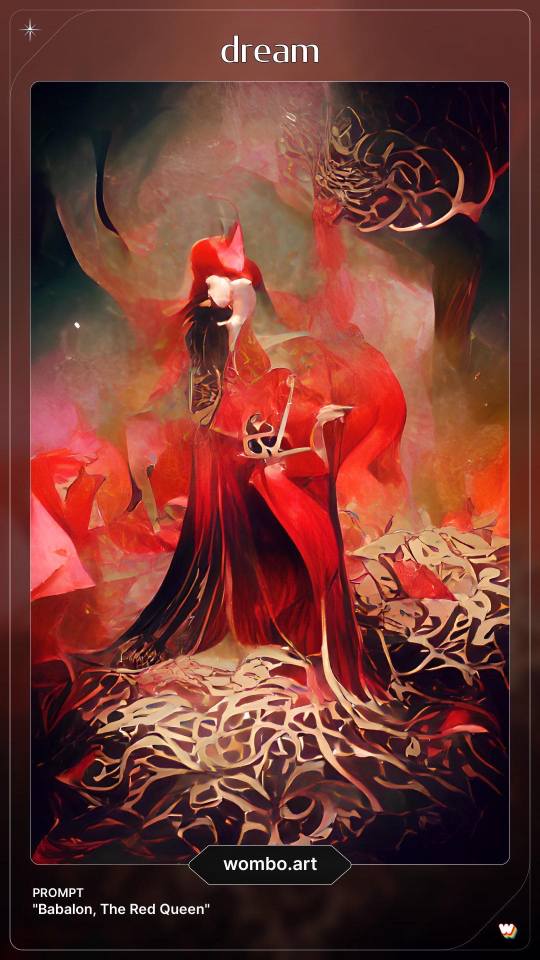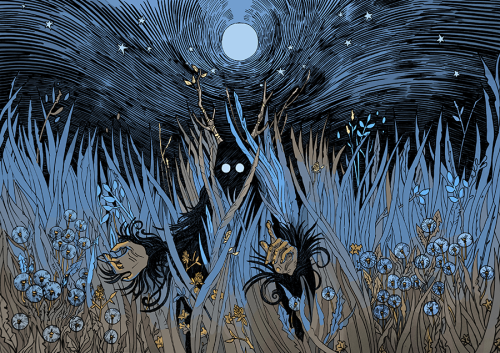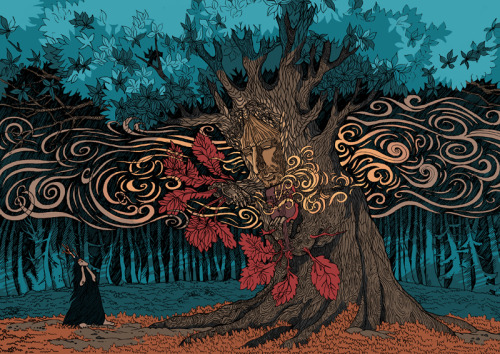Here’s My Contribution To The #regionalwitchcraftchallenge Started By Via Hedera

Here’s my contribution to the #regionalwitchcraftchallenge started by Via Hedera
.
.
.
So I wasn’t sure if I should have taken part in this because #Maine doesn’t really have anything (that I know of) that is specific to the region.
To make up for that, I try to incorporate as much of the local flora, fauna, and landscape as I can.
.
.
-Maine black bear skull, gifted from a local hunter
-Novena candle (one side of my family is Catholic and that has started to influence my craft)
-Locally harvested cedar
-Two keepsakes of my departed grandparents
-Birch Water (à la “An Carow Gwyn”) with bark harvest from my property
-An antique rosary found while thrifting
-A hag stone from the coast of Maine
-Selected bones from my casting kit that are all local animals (red fox, coyote, beaver, bobcat)
-An arrowhead from our state museum
-Ritual blade made from white-tail deer
.
.
.
More Posts from Saintedsorcery and Others





The book says that these are talismans that are meant to be re drawn on paper and carried with you to give the you these abilities.
The Book of Oberon
Mother, Queen, Harlot
I feel the need to state that I am not a Thelemite and that my relationship and understanding of Babalon is informed mostly via direct contact with Her.
It was almost 10 years ago that I first felt Her presence. She would not give me a name but simply images, symbols, and emotions that represented her. I saw images of sex, blood, fire, blades, and serpents. Feelings of lust, love, passion, rage, sovereignty and feminine power.
Truth be told I wasn’t in the place to have a spirit like that be active in my life so it would be a few years before I set up a shrine to Her.
Her shrine was simple. An inexpensive goddess statue with a red costume rosary wrapped around it, a red candle, and a letter opener with a crown motif. I would burn incense and meditate on Her, sometimes seeking guidance, sometimes just simply being with her. I began referring to Her as “The Red Queen” while still not having a proper name. I was becoming comfortable with her ambiguity and in turn she was helping me become comfortable with myself.
It was around this time that I began working with a teacher who was helping me with visionary work and spirit flight. It was during one of our sessions that I made a breakthrough and came face-to-face with my Red Queen. She sat on a scarlet cushion in a rooms who’s lamps were draped with red scarves. Her hair was a deep brown almost black, her skin was an inhuman pale white. Her arm was casual laying across one upraised knee. She has gold bangles and armlets, gold anklets and rings, a gold hoop around her neck and in her ears, but ironically no crown. Her clothes were reminiscent of an Indian saree the colour of blood.
I sat across from her and bowed, placing my head on the cushioned floor. When I raised my head, she locked eyes with me.
“I am have many names, I am many. I am Ishtar, I am Innana, I am Lilith, I am the Queen of Heaven and Hell. But you, you will know me as Babalon.”
Thats when I returned to my body. I was flooded with joy and exhilaration, She had told me Her name, I had a better focus.
I knew that Babalon was a goddess in Thelema, but I knew next to nothing about Her other than that. To this day I still don’t really know much about her role in Thelema but I've been considering studying it. I’ve continued to go straight to Her when it comes to offerings, prayers, etc. Reading how others interact with her from time to time. Her shrine has grown but not by much, She’s comfortable with it being simple but beautiful. I have been searching for a new statue for Her though, something that I feel fits her better.
Babalon, The Red Queen, has been my strongest spiritual ally during my transition. She has held my hand and guided my feet as I find my femininity, rediscover my sexuality, and navigate the world as a woman. I’ve taken her epithet “Mother of Abominations” as a sort of trans mother goddess. Trans people are Her children and Her prophets. We are the drops of blood from Her Grail, we are the swords in Her hands. I doubt this is what Crowley had in mind when conceptualizing the goddess but honestly, I don’t care.
I’ve come to understand Babalon in three sort of facets or faces. The Mother (of Abominations), The Sacred Whore, and The Warrior-Queen. I don’t know if any other people would agree with me or if there is literature to back it up but this is my personal gnosis.
The Mother I already discussed above. The Sacred Whore and Warrior-Queen are both reminiscent of Ishtar/Inanna, but the Sacred Whore for me personally aligns with her Lilith aspect. Babalon-Lilith is feminine sexuality embodied, but even more she is the taboo side of femme sex, she is trans and kink, she is queer, she is unbridled and selfish, she is the side of our sexuality that is without limit and free. She’s taught me to not be ashamed of what I like and what I want when it comes to sexual satisfaction. My sexuality is mine and no one else's.
The Warrior-Queen is the aspect I am the least in touch with. I’m a pacifist person and seek non-violence in my regular life as much as I can. I have a rather hot temper that I’ve had to learn to keep under control. My most powerful weapon is my tongue and I’d rather talk my way out of a situation than ever resort to violence. Maybe my disconnect with the Warrior-Queen is that I need to recontextualize what it means for me, personally, to be a warrior. We’ll have to see how it plays out.
I’ll leave this post with an A.I. generated art piece I made as a devotional act using the phone app “Dream”


Werewolf History Project: Prehistory-
First part of a project looking at the history of werewolves and werewolf myths! Starting with early prehistory and the emergence of stories, especially the advent of animal/human figures.

Jeszika Le Vye - Sorceress (Zenith)
Heresy As Healing

When I first got into paganism and witchcraft, I did what I think a lot of people do and took a very hard turn in to “fuck Christianity!” The literature and discourse of the early and mid 2000′s didn't help this mindset either. There was a lot of talk about how Wicca (I was an eclectic wiccan at the time) was the survival of an ancient pre-Christian religion and that Christianity stole its practices, holidays, and pretty much everything else, from paganism.
Needless to say my religious baggage went unpacked for YEARS?
That was until i left my more Wicca-inspired practice and found “traditional witchcraft”. In these spaces i found something that i had been lead to believe was impossible: Witchcraft and Christianity coexisting. Not only coexisting, but a style of witchcraft created by almost biblical teachings on their heads and pulling out the magic. Lucifer and Azaezel being sources of witch-power, Cain being the first Sorcerer, the witch’s horned one as the Devil! Seeing the witch-trials as not simply a tragedy, but pulling wisdom and magic from the confessions. All of this was new and exciting!
Beginning my research into this amazing new avenue was the first step in healing my heart and soul from the hitherto ignored scars left by my time in the Church. The more I walked this strange and crooked path, the more I found value in heresy. Calling to the Man in Black at a crossroads, flying from my body to the Witch’s Sabbath, reciting the Lord’s Prayer backwards. All of these were powerful in ways I never thought they could be. I laughed at myself. If you had told me at 18 that in 5 years id be dancing with the Devil, I would have raged about there being no Devil in the Craft. While I understand now why the 90s-2000s were so “anti-devil” and “love and light” I’m glad that we can now look at witchcraft and its history with a more nuanced lens.
Now in some ways I've come full circle. I am not a Christian, and I don't think i ever will be, but I pray to saints, I have a growing interest in Mary, I use psalms and bible verses in my spell work, i craft rosaries as a devotional act to the spirits I serve and honour. My patron goddess has even started to come to me with Marian imagery and titles.
In Fayerie Traditionalism/Fayerism we’re encouraged (sometimes outright told) to avoid and expunge all Abrahamism from our lives and certainly from our Sorcery. We’re told that there is no magic or value in Abrahamic traditions. This has been my biggest hurdle with this path. For me, i find so much power in using folk magic that would be deemed “witchcraft” by the Church, regardless of how much scripture is in it. I think to continue this idea of “there's no place for Christianity in witchcraft” does such a disservice to the history of witchcraft in Europe and the US. So many practices would not exist if our ancestors had not learned to synchronize and hide in plain site. I’m not calling on God when I use a psalm to heal, I'm speaking words of power that have been spoken for centuries by other healers and workers. When I pray the rosary, I do it to honor my ancestors who found comfort in it.
For me, the catholic folk magic and heretical aesthetics do not deter me from path of Fayerie Traditionalism, it is simply another avenue to the same goal. The spirits of this tradition have not shown any ill-will to how I work. Gwynn still comes when I call him “Devil” or “Master” and Gwynnevar herself told me to call her “Our Lady Down Below” or “Our Lady of the Mound/Hill” Taking back my power from Christianity and seeing the Wisdom in its heresy has made me a better person and a stronger sorcerer. I have not lost my faith in the Fayerie People but have come closer to them.
All this is to say:
Be free
Be powerful
Be a Heretic
Nema
When someone blogs about a spell, consecration, ritual or any personal magical or witchcraft work, they usually leave something out intentionally or unintentionally, said or unsaid. My first witchcraft teacher taught me to always add something to my spell work and especially if a spell had an even number of components to make it odd by addition. As a witch you need to make a spell your own, something that you and your spirits add to the mix. While most anybody can use a well made spell without edit to reasonable success, a witch tends to seal theirs with some personal flair. I have not heard this specific advice repeated by any of my subsequent craft teachers; however, it rings so true and perhaps sensible that I have always held it. Of course my subsequent teachers have emphasized making your own spells. So the emphasis on personalized witchcraft holds.



by yanadhyana
slavic folk charm that I have twofold love for: if a young girl desires to have long, strong and thick hair, she should go into the forest or go into the field, and among the rocks find snake’s shedded skin - take it, and boil it, and with that concoction wash her hair.
but beware, as her hair shall truly be like a snake - and should she forget to be cautious, it will coil around her neck and choke out her last young breath.
🌙French traditional witchcraft!
🌙Sorcellerie traditionnelle française!
🍄Reblog si tu es un.e sorcier.ère française ou intéressé.e par la sorcellerie française !
🍄Reblog if you are a french witch or if you are interested in French witchcraft!
Half-formed ramble about magical identity

I’ve recently started coming to the realisation that, well that I don’t think “witch” really fits me anymore. This isn’t to say that I still don’t practice witchcraft or that it would be wrong to call me a witch, but more that my personal craft has developed in way that makes me question if it’s a moniker that still fits me.
Over the past several years, my craft has been moving more and more into the realm of charms and cures. I craft simple charms for people to gain luck and love. I walk folks through the processes of pulling off stagnant energy and uncrossing work. I still get requests to cleanse and bless homes. Owning a home and land for the past year has pushed me even more into the role of “village witch” I’ve started learning the language of my land, looking at potential plant and animal allies around me.
I think the two biggest influences for this change are my joining Fayerie Traditionalism/Fayerism and my study of folk magic
Fayerism focuses on spiritual ecology and the harmonious relationship between the Seen and Unseen worlds. Folk magic (as a magic of the people) is all about domestic life of the individual and the community.
All this is just a round about way of saying that I feel as if I’m growing into more of a “cunning woman” than a witch. My arte focuses on healing ailments (alongside modern medicine of course), attracting prosperity, and blessing those around me. I use my craft to help those around me whenever I and however I can, whether they be human or other-than-human persons.
And to be honest I’ve been moving away from the “witch” title for a while, although privately. Testing different mantles to find something that fit, sticking with “sorcerer/sorceress” for the most part. It wasn’t until last night that it stuck me how much like the cunning folk of Europe I’ve become.
I won’t correct any that call me “witch”, for as I said, I still practice witchcraft alongside other forms of magic. I’ll still be using the hashtag to appease the algorithms and I’ll still promote my services as a witch, but I think I’m going to start referring to myself as a “cunning woman” and see how that feels. I might even look into regional variants of the profession and see if the French had a localised term for the “cunning person/folk healer/white witch” as a nod to my ancestry
-
 lethea1969 liked this · 5 months ago
lethea1969 liked this · 5 months ago -
 blaqmercury liked this · 6 months ago
blaqmercury liked this · 6 months ago -
 yira777 reblogged this · 6 months ago
yira777 reblogged this · 6 months ago -
 yira777 liked this · 6 months ago
yira777 liked this · 6 months ago -
 oddlyexquisite liked this · 6 months ago
oddlyexquisite liked this · 6 months ago -
 mysticmashedpotatoes liked this · 6 months ago
mysticmashedpotatoes liked this · 6 months ago -
 voluptuarian liked this · 6 months ago
voluptuarian liked this · 6 months ago -
 rowan-reads liked this · 6 months ago
rowan-reads liked this · 6 months ago -
 ohmarjorie reblogged this · 6 months ago
ohmarjorie reblogged this · 6 months ago -
 ohmarjorie liked this · 6 months ago
ohmarjorie liked this · 6 months ago -
 not200cigarettes liked this · 6 months ago
not200cigarettes liked this · 6 months ago -
 uncomfortablecliche liked this · 6 months ago
uncomfortablecliche liked this · 6 months ago -
 fair-is-foul reblogged this · 6 months ago
fair-is-foul reblogged this · 6 months ago -
 bigcitynites liked this · 2 years ago
bigcitynites liked this · 2 years ago -
 darkphilosophe liked this · 2 years ago
darkphilosophe liked this · 2 years ago -
 imperatrixnoctum liked this · 3 years ago
imperatrixnoctum liked this · 3 years ago -
 dweomerthread liked this · 4 years ago
dweomerthread liked this · 4 years ago -
 phlegmboymessiah liked this · 4 years ago
phlegmboymessiah liked this · 4 years ago -
 saintedsorcery reblogged this · 4 years ago
saintedsorcery reblogged this · 4 years ago
